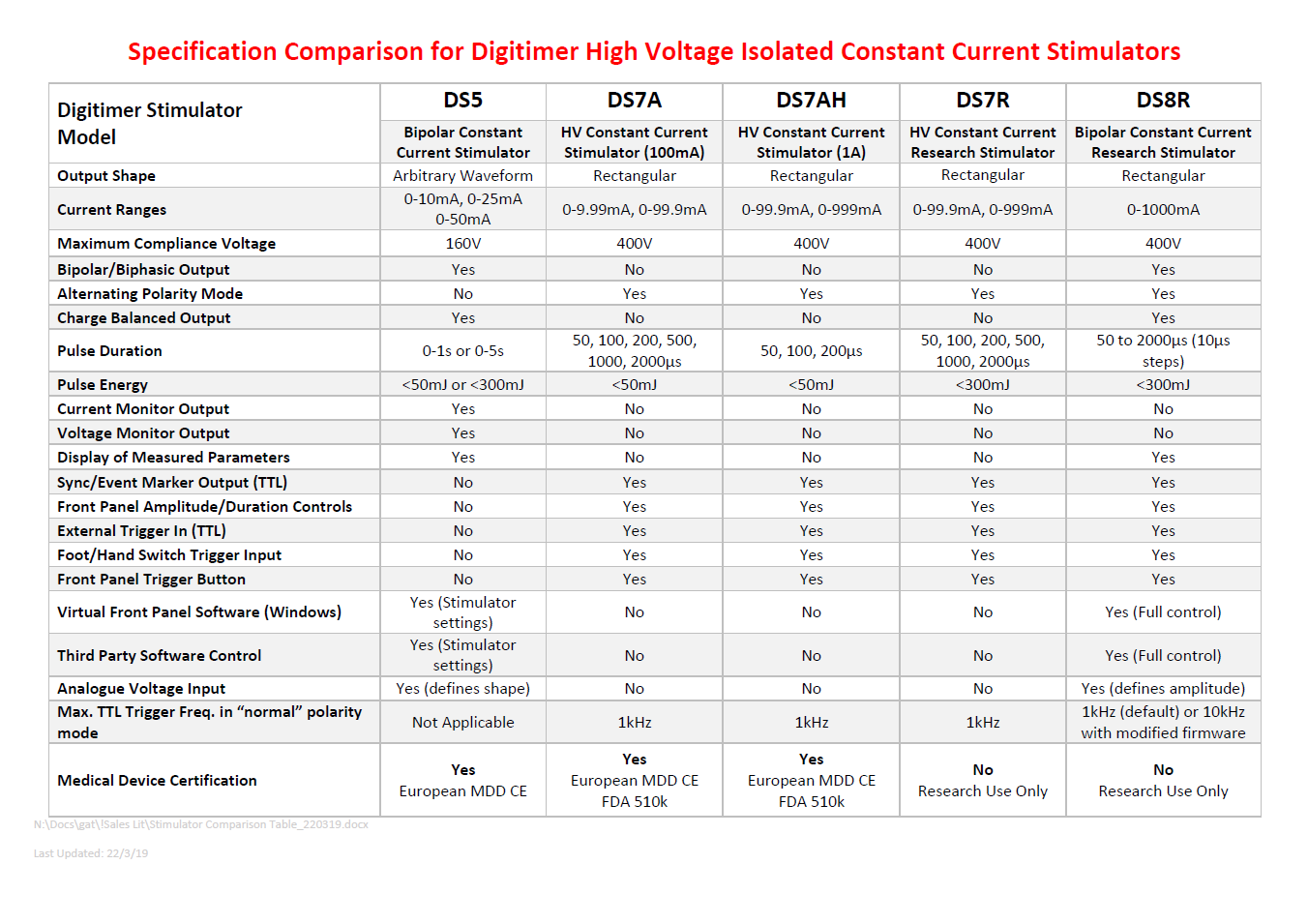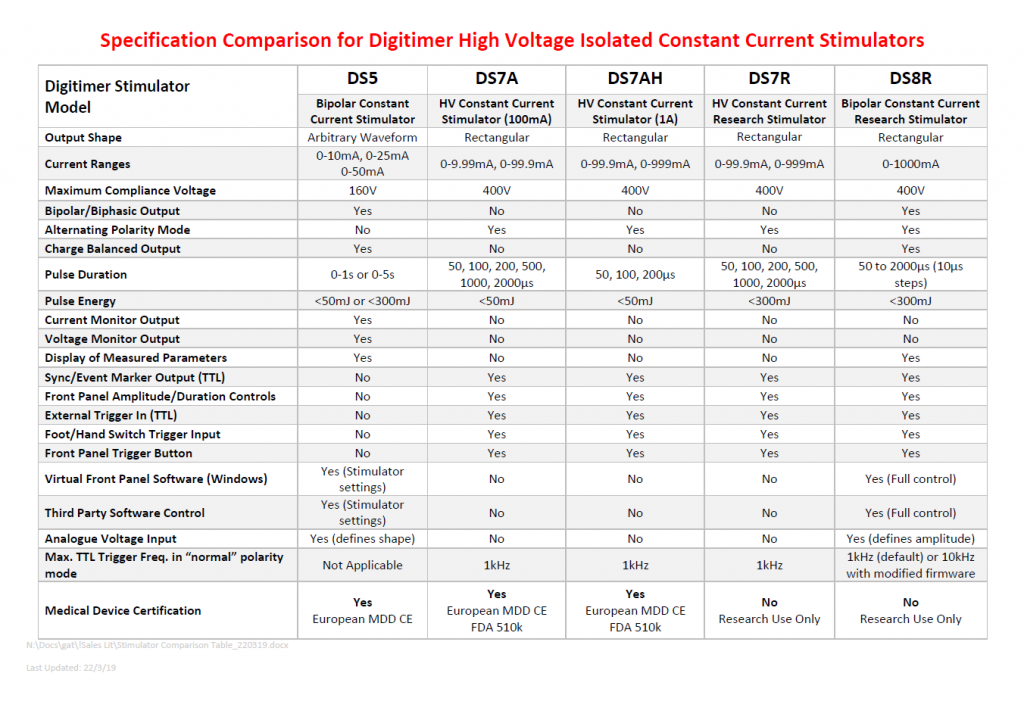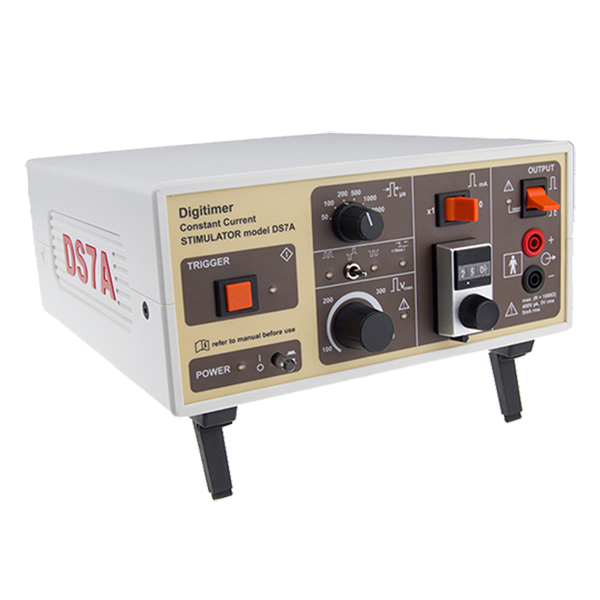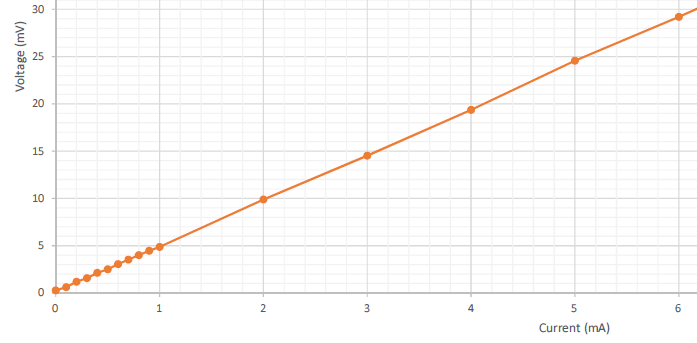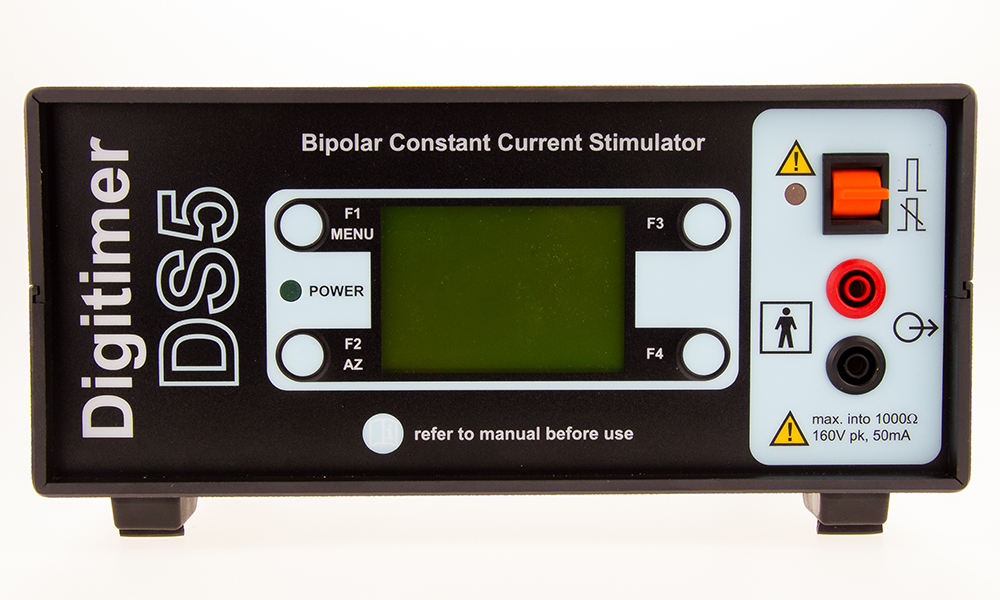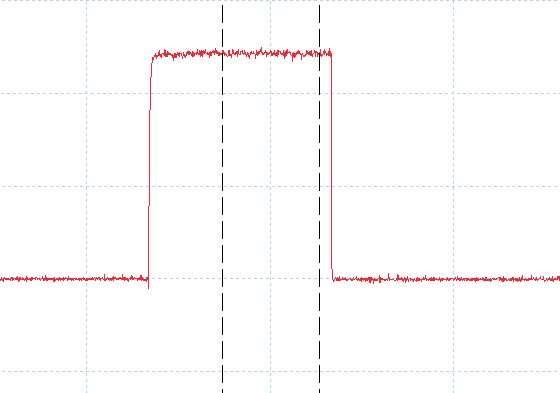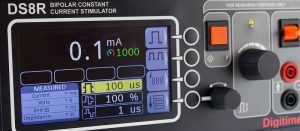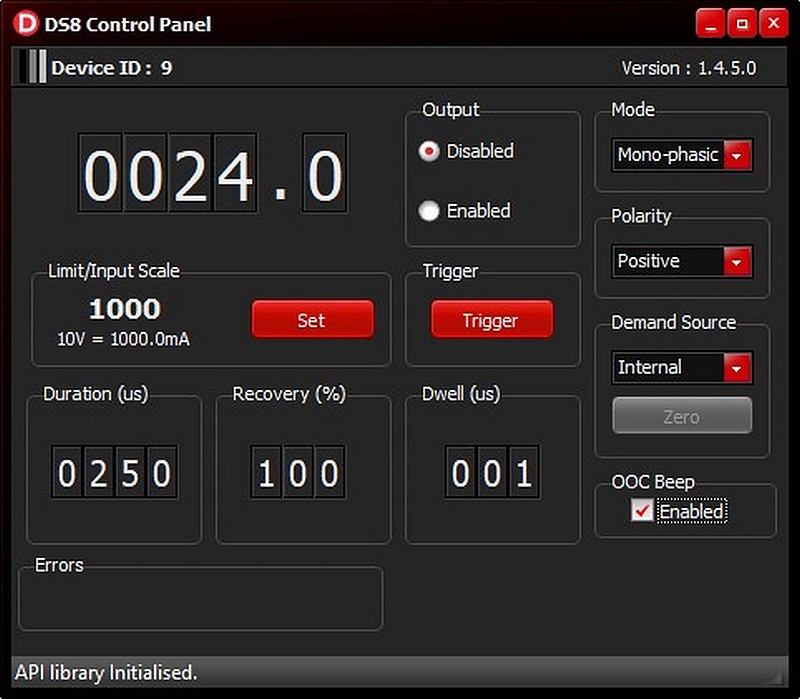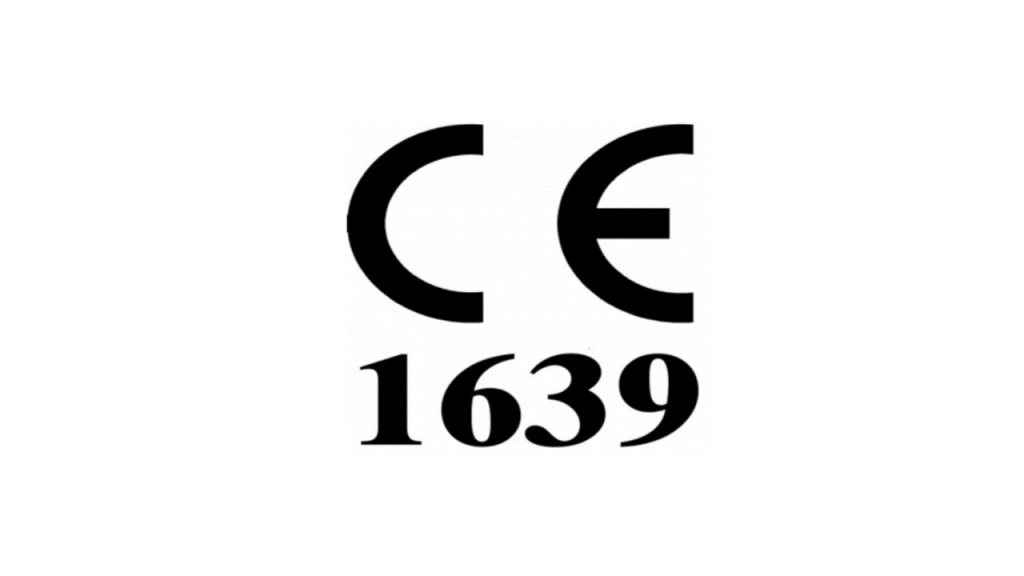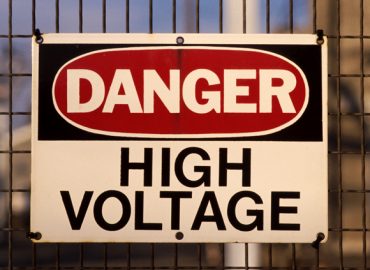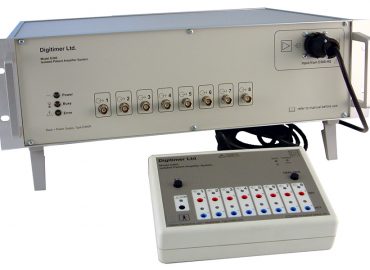Choosing a Stimulator for Human Applications
Our guide to Digitimer’s range of isolated electrical stimulators
Digitimer has been developing electrical stimulators for nearly 50 years and in that time we have manufactured an array of different devices for animal, in vitro and human use. Our stimulators are specifically designed to meet the needs of each application, and while we aim to make our products as general-purpose as possible, it is important to realise that there are specific reasons why some stimulators are recommended in certain situations.
Here we discuss our line-up of isolated constant current electrical stimulators, concentrating on those that are medically approved for clinical neurophysiology or those intended for human research applications. As an aid to anyone wanting to compare these devices, which include our DS5, DS7A, DS7AH, DS7R and DS8R, we have produced a table that summarises their characteristics. This table can also be downloaded in PDF format for future reference. We also discuss some of the major features used to describe the specifications of an electrical stimulator and explain their significance.
What is Constant Current Stimulation?
So, what is a constant current stimulator and why should you use one? If you are reading this, I imagine you already know that Digitimer’s electrical stimulators are typically used to activate nerves or muscles in order to investigate physiological systems or carry out neurodiagnostic tests. Electrical stimulators generally include controls that adjust the stimulus intensity and this is usually defined in terms of the Current or Voltage delivered.
Constant current stimulators are designed to maintain the stimulus current at a user set value during stimulation, irrespective of the resistance of the stimulation pathway. In situations where the resistance is continuously changing, a constant current stimulator increases or decrease the voltage in order to keep the current flow and therefore the stimulus intensity at the required level. In contrast, the stimulus intensity of a constant voltage stimulator is set using a voltage dial. With constant voltage devices, any variations in electrode resistance will affect the amount of current flowing and this can make it harder to control for variability in response measurements. Because of this, it is more common for constant current output to be utilised in evoked potential stimulators.
Output Current Range
Probably the most important thing to consider when choosing a stimulator is whether the current output will suit your needs. Researchers interested in sensory thresholds might only need a few mA, while those wanting to deliver an aversive or nociceptive stimulus may only need 10mA to obtain the desired effect. Investigators examining neuromuscular reflexes may require up to 200mA, while stimulation of large muscle groups, such as the quadriceps or spinal nerve roots could necessitate currents in excess of 500mA.
Fortunately, our stimulators are able to cover all of these requirements. Offering up to 100mA, the DS7A is possibly the most general purpose of all our stimulators, while our DS7AH, DS7R and DS8R provide a maximum current of 1000mA. In contrast, the DS5 Bipolar Stimulator only has a current output range of ±50mA, but for some applications, it has advantages over these higher-powered devices due to its alternative method of control. We will return to this important difference later in the article.
Output Resolution & Accuracy
Another feature that is related to output range is output resolution and accuracy. It is important to note that a stimulator specified to deliver an output from 0-100mA with 2% accuracy will not necessarily be able to offer this level of precision over the whole output range. Generally, as the amplitude setting is decreased, the error will increase as a proportion of the set value. Even when digital control is used in place of manual dials, the electronic components used within the stimulator will exhibit tolerances that will determine the overall accuracy of the device, so you should bear this in mind during the selection process. Fortunately, our constant current stimulators exhibit exceptional linearity even at stimulus intensities well below 1mA, as demonstrated by the graph below of the DS8R output. This performance is even more remarkable when you consider this is a device that can also deliver up to 1A.
Compliance Voltage
Anyone who routinely uses electrical stimulation should already be familiar with Ohm’s Law (V=IR). In constant-current stimulation, Ohm’s law allows you to predict what voltage will be needed to deliver a specific current if the resistance of the preparation/electrode is known. For instance, if you want to deliver a 10mA stimulus through a 10kohm resistance you will need a stimulator with a voltage source of 100V. If the stimulator only has a compliance limit of 50V, the maximum current delivered will only be 5mA, even if the device is set to 10mA. If the actual current being delivered is of importance, it is critically important that out of compliance issues are avoided.
Most of the stimulators in this category have a compliance maximum of 400V, allowing them to drive large currents through all standard electrodes intended for transcutaneous electrical stimulation. The high voltage compliance of the DS7A, DS7AH, DS7R and DS8R means that where necessary they can also be used to deliver low amplitude currents through very high impedance electrodes. Having a reduced current range, the DS5 has a lowered compliance voltage of ±160V.
Pulse duration
Pulse duration has an influence on the “strength” of the stimulus, so all our stimulators include the ability to adjust the pulse duration to optimise the stimulus for particular responses. All the triggered pulse stimulators have multiple options for pulse duration, within the range of 50µs to 2000µs. The DS7A has settings for 50, 100, 200, 500, 1000 and 2000µs, while the DS7AH is limited to 50, 100 and 200µs in order to ensure the pulse energy it produces stays below the 50mJ limit imposed by the specific medical device standard for evoked potential stimulators. Even though they can deliver up to 1000mA, because the DS7R and DS8R are intended for research use, they have flexible pulse duration settings. The DS7R has the same options as the DS7A, while the DS8R allows smaller increments of 10µs between 50µs and 2000µs. Once again the DS5 behaves slightly differently, as the stimulus duration is to a large extent determined by the duration of the voltage signal used to define it.
Output Pulse Shape
The DS7A, DS7AH, DS7R and DS8R all produce a rectangular output pulse in response to a valid trigger. The stimulus is characterised by a sharp rising edge, plateau phase and rapid return to the baseline, although the actual profile of the current waveform will be affected by the biophysical properties, including capacitance within the electrode-skin interface.
For the DS5, the shape of the output pulse is determined by the profile of a voltage signal that is applied to the stimulator. The DS5 converts this biphasic voltage waveform into an isolated current pulse that is the same shape and proportional to the input voltage. Essentially the DS5 operates like a voltage to isolated current amplifier, allowing the user to define completely arbitrary stimulus shapes, including sine waves or random noise.
Polarity, biphasic or charge-balanced output
Stimulus polarity is determined by the direction of current flow and in the case of the DS7A, DSAH, DS7R and DS8R, front panel switches or buttons allow the user to reverse polarity or cause polarity to alternate after each stimulus. Polarity reversal switches the identity of the anode and cathode and is one method used to make long term stimulation protocols more tolerable for the subject.
It is sometimes more desirable to deliver biphasic stimuli, which have positive and negative phases. A truly biphasic stimulus, where there is little or no delay between phases, can sometimes reduce the amplitude of the stimulus artefact, making it easier to visualise a short-latency response. Our DS8R stimulator has options for polarity reversal, alternating polarity and can even deliver biphasic stimuli.
As well as producing symmetrical biphasic stimuli, the DS8R has the ability to generate charge-balanced non-symmetric pulses. This feature means that a monophasic stimulus can be followed by a “recovery” phase which is a longer-lasting, lower amplitude pulse of reverse polarity, which ensures that the net charge passing through the skin is zero. This allows monopolar stimulation to be delivered without causing harmful electrolytic damage to the skin under the active electrode.
Because the DS5 is controlled by an analogue voltage signal, it is possible to use software to define waveform shapes that alternate polarity or even replicate the charge-balanced biphasic pulses that the DS8R can produce.
Hardware & software control methods
Historically, our triggered pulse stimulators have only allowed external devices to trigger stimulus delivery and do not allow any external control of the pulse parameters. In the case of the DS7A, DS7AH and DS7R, external control is limited to a Trigger In socket that allows a TTL compatible voltage pulse to trigger a stimulus. Each of these units also allows a contact closure foot or hand switch to trigger a stimulus.
With the DS8R, we still provide a standard Trigger In socket and footswitch input, but the DS8R also features a Control Input that allows a voltage level may be used to control the stimulus current amplitude. Used in combination with a TTL Trigger, this provides a simple method of controlling stimulus delivery and intensity in an automated way. The DS8R also features a USB connection and is supplied with software that allows our own virtual front panel software and embedded API to control all DS8R settings. The API can be accessed by third-party programs like CED Spike2 or Signal, Python or Matlab to enable full automation of stimulation protocols.
In the case of the DS5, a single Control input allows a biphasic voltage waveform generated by a DAQ system to define the stimulus parameters. Like the DS8R, the DS5 features a USB connection, but this merely permits the stimulator settings to be adjusted remotely and cannot be used to control or define a stimulus.
The importance of medical device certification
All the stimulators referred to in this article are designed for safe use with human subjects in a research setting, however, some of our stimulators have been certified according to certain internationally recognised medical device standards. The DS7R and DS8R are designated as human research devices and while we have chosen to comply with certain medical device standards, because of their more versatile features, we are not able to medically certify them.
In contrast, the DS5, DS7A and DS7AH are all medically certified with the UK and EU, as well as several other countries. In the case of the DS7A and DS7AH, they also have an FDA 510(k), clearing them for marketing within the USA. For more information relating to the use of non-medically approved electrical stimulators in human use, please see our earlier blog article.
Don’t forget, we are here to help
As our medical and human research stimulator range expands and becomes more technically complex, we appreciate the choice of device is not necessarily straightforward. If you are looking for a stimulator suitable for human applications and this article and the associated table have not brought you to a decision, we would be delighted to provide additional guidance. Just get in touch via our website or give us a call.
